Views: 325
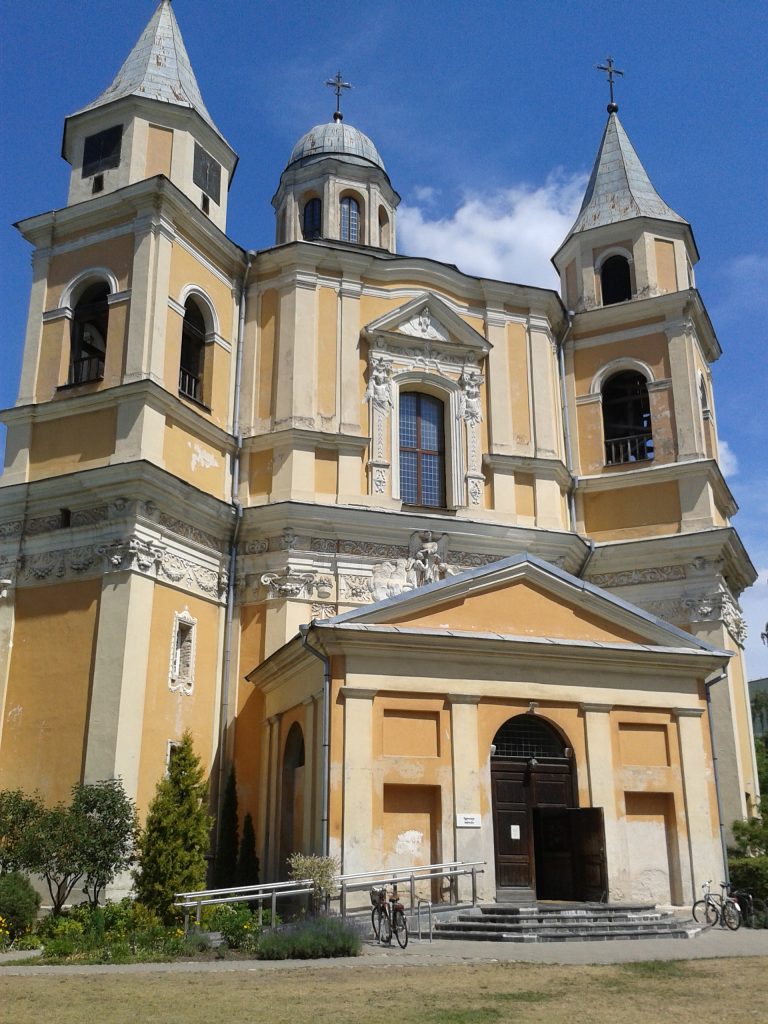
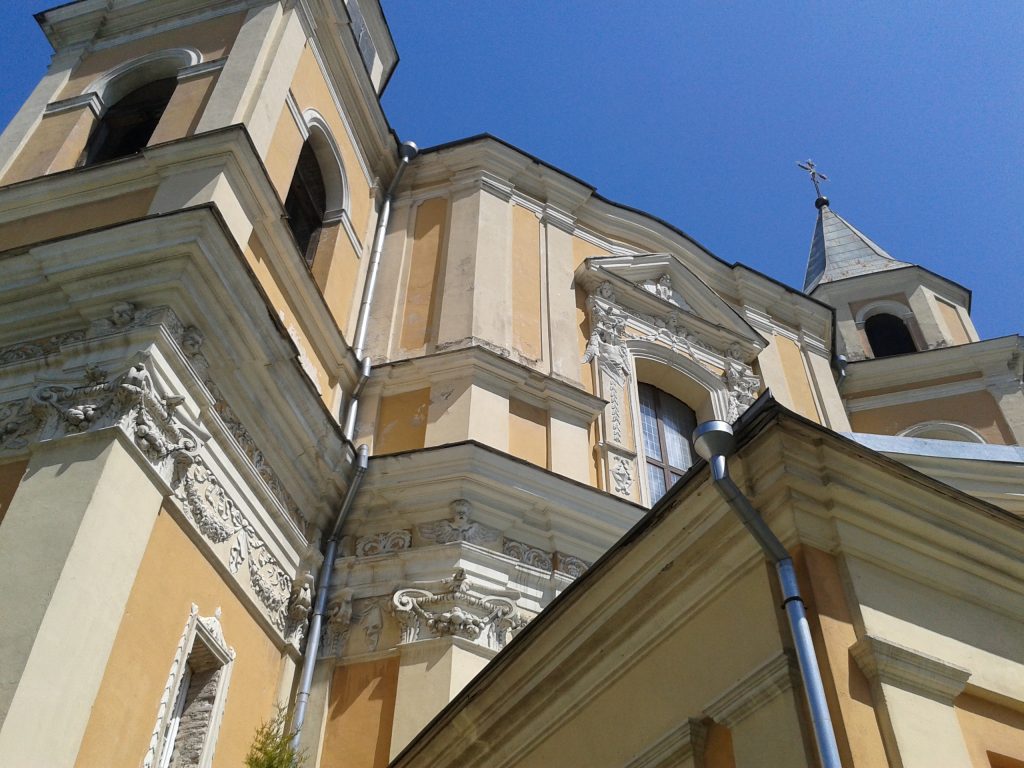
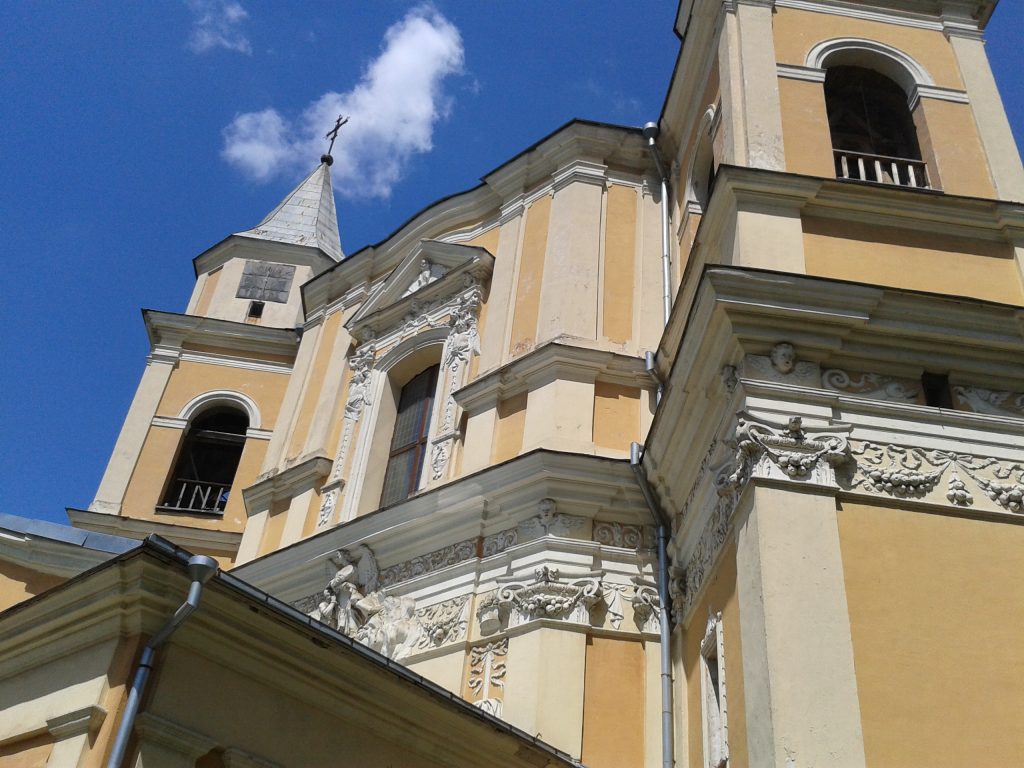
All photos are copyrighted by Vladislav B. Sotirovic
© Vladislav B. Sotirovic 2019

RELATED POSTS
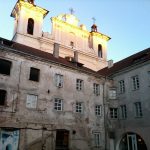
In Old Town in Vilnius, at the Church of the Holy Spirit, on St. Ignatius St., a Dominican monastery was established in 1501At the time of Napoleonic Wars (in 1812) the Dominican monastery of the Church of the Holy Spirit was used by the French army as a hospitalThe monastery was converted into a prison by the Russian authorities in 1807. Corridors are decorated by frescoes from the 18th centuryAll photos are copyrighted by Vladislav B. Sotirovic© Vladislav B. Sotirovic 2021
Continue Reading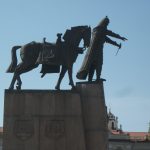
Grand Duke Gediminas is considered as the founder of the city of Vilnius. The monument is located in front of the Royal Palace and Cathedral Basilica in the very downtown of VilniusGediminas was a diplomatic politician, creating ties with the Roman Pope and other European rulers. He created favourable conditions for merchants and guildsmen to come to the city. Gediminas was a Grand Duke of the Grand Duchy of Lithuania from 1316 to 1341During the time of Gediminas, people of different ethnicities and confessions began to live in Vilnius. He is the founder of the Gediminian-Jagelonian ruling dynasty of Lithuania and later of Poland as well (till 1572)All photos are copyrighted by Vladislav B. Sotirovic© Vladislav B. Sotirovic 2018
Continue Reading
Tour № 1 – Šventaragis ValleyCathedral Basilica of St. Stanislaus & St. VladislausCathedral Basilica of St. Stanislaus & St. Vladislaus (inside, including the Chapel of St. Casimir, the Chapel of Deportees, the Gasztołd Chapel, the Royal Chapel, St. Wladislaw/Vladislaus/Ladislav Chapel, High alter, Memorial plague to the Grand Duke of Lithuania Vytautas Magnus, the Sapieha Madona’s picture, etc)Cathedral Basilica Bell TowerRoyal Palace of Lithuania (the Palace of Grand Dukes of the Grand Duchy of Lithuania)Upper CastleUpper Castle’s West (Gediminas) TowerOld Arsenal – Museum of Applied ArtNew Arsenal – Lithuanian National MuseumMonument to King Mindaugas (1236-1263: Crowned King on July 6th, 1253)Monument to Lithuanian Grand Duke Gediminas (1316-1341: the founder of Gediminian-Jagiellonian ruling dynasty)Tour № 2 – Vilnius University & Monastery QuarterVilnius University – Historical Campus (est. 1579)Vilnius University – the Bronze door of the Central LibraryVilnius University – Historical Campus (inside, including 12 university’s courtyards, Domus Philologiae, Smuglevičius Hall, White (Observatory) ...
Continue Reading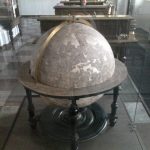
Vilnius University was the first observatory center in Eastern Europe and the 4th in the worldWhite Hall now houses unique astronomical instruments and a reading roomThe narrow staircase leads to the observatory tower, which reveals a panorama of the Vilnius Old TownAll photos are copyrighted by Vladislav B. Sotirovic© Vladislav B. Sotirovic 2023
Continue Reading
The chapel was built in 1624-1636 to hold the remains of St. Casimir who was canonized in 1604. The chapel is part of the Cathedral Basilica in Vilnius The construction of the Early Roman Baroque-style chapel was funded by rulers Sigismund and Vladislaus Vasa. It was a place where the Grand Dukes of Lithuania prayed and could be reached by a corridor joined to the Lower CastleThe chapel is the work of Italian masters and one of the most beautiful Baroque mausoleums in Lithuania All photos are copyrighted by Vladislav B. Sotirovic© Vladislav B. Sotirovic 2019
Continue Reading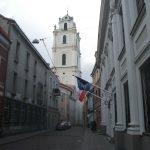
In this street, it was used to be a market place where it meets Pilies street. The first Town Hall is also believed to have stood on this spot Pharmacy house in St. John St. No. 5. Georg Schulz's pharmacy operated in this house since 1639. During the war in 1655, the house was burned down. In 1781, pharmacist Koszyk acquired the ruined building and reconstructed it The Pac estate. Since 1628, the building belonged to the Pac magnate family of the Grand Duchy of Lithuania. In 1783, the dilapidated building was bought, renovated and decorated by the Chancellor of the Grand Duchy of Lithuania - Alexander Michael Sapieha. Currently, the building belongs to the Polish Embassy All photos are copyrighted by Vladislav B. Sotirovic© Vladislav B. Sotirovic 2020
Continue Reading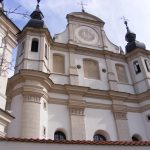
The church was financed by Grand Chancellor of the Grand Duchy of Lithuania, Grand Hetman, and Vilnius Voivode - Lew Sapieha, who had converted to Roman Catholicism from Calvinism. He was one of the most influential nobles in the Grand Duchy of LithuaniaLew Sapieha gave the church and surrounding buildings for the Bernardine nuns to have a convent and built a Sapieha family mausoleum in the churchThe convent was also a place where the daughters of rich aristocrats were taught. Today, the Church Heritage Museum operates in the churchAll photos are copyrighted by Vladislav B. Sotirovic© Vladislav B. Sotirovic 2019
Continue Reading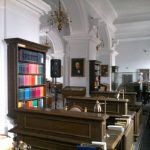
The architect whose name is most closely associated with Vilnius University is the Jesuit Tomas Zhebrauskas who founded (together with Elžbieta Oginskaitė-Puzinienė, the daughter of the famous manor owner Mykolas Oginskis) and designed the observatory, in 1753. The White Hall belongs to the observatory The astronomical observatory of Vilnius University is one of the oldest in Europe and the oldest in the former Polish-Lithuanian Commonwealth. It was famous in Europe for its astronomers and their works until it was closed after the fire of 1876The White Hall today is, in fact, a reading room of the Library of Vilnius UniversityAll photos are copyrighted by Vladislav B. Sotirovic© Vladislav B. Sotirovic 2023
Continue Reading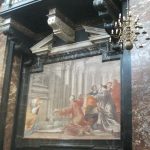
The silver cofin of St. Casimir is under a plaster canopy accompanied by relics. Under the cofin is a miraculous painting in a silver frame, with a silver statue with the saint's attributes placed on the cofin. The relief features a very rare depiction of a smiling Blessed Virgin Mary with Baby JesusIn the chapel there are eight silver-plated wooden Baroque statues of the Kings and Grand Dukes of Poland and Lithuania from the Gediminid and Jagiellon dynasties from the 17th centuryThree-Handed Image of St. Casimir c. 1520. This painting is considered to be miraculous. In 1743 the painting was put into a silver, gold-plated framing. St. Casimir is holding lilies and a rosary, which are his symbolsAll photos are copyrighted by Vladislav B. Sotirovic© Vladislav B. Sotirovic 2020
Continue Reading
In 1986 the east winf of the Old Arsenal was restored. It houses the Museum of Applied Art and Design. The Old Arsenal enables the visitors to feel the ambience of the Renaissance Vilnius The building of the Old Arsenal was remodelled by Sigismund Augustus (second half of the 16th century) in the Renaissance style, mainly by adding a third floor (the attic), decorated in double arch niches. In was an enormous building, reputed to be the largest in the Polish-Lithuanian Commonwealth The Old Arsenal was badly damaged during the war with Russia in 1655-1661, and remained a virtual ruin until the late 18th century when in 1780 was rebuilt and burned down at the end of WWIIAll photos are copyrighted by Vladislav B. Sotirovic© Vladislav B. Sotirovic 2020
Continue Reading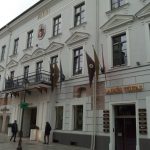
Polish King Jan Sobieski, Russian Emperor Alexander I and French Emperor Napoleon I visited the mansion on various occasions. The building was reconstructed in 1839-1841. The present façade is ClassicalA Florentine artist Michelangelo Palloni, was invited from Italy in 1674 to work at Pažaislis monastery and church near Kaunas, and Mykolas Kazimieras Pacas then commissioned him to paint frescoes for of this estate.Unfortunately, none of the original interior, which also included rich stucco work, remainsAll photos are copyrighted by Vladislav B. Sotirovic© Vladislav B. Sotirovic 2022
Continue Reading
A geographical centre of Europe - 25 km far from Vilnius. From 2015 Summer You will get a special Certificate that you have visited the Geographical center of Europe. Don't miss the chance to get it for freeThe Baltic States of Europe - Estonia, Latvia & LithuaniaVytis (The Knight) - The Coat of Arm of both historical Grand Duchy of Lithuania and present-day the Republic of LithuaniaOrigins of images: Facebook, Twitter, Wikimedia, Wikipedia, Flickr, Google, Imageinjection & Pinterest.Read our Disclaimer/Legal Statement!Donate to Support UsWe would like to ask you to consider a small donation to help our team keep working.
Continue Reading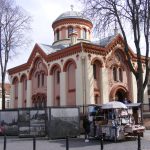
The Russian Orthodox Church of St. Parasceve (or Piatnickaya Church) is located in the centre of Vilnius' Old Town where a Russian Orthodox Church stood since the times of the Lithuanian Grand Duke Algirdas in the mid-14th centurySt. Parasceve Russian Orthodox Church is the oldest surviving Russian Orthodox Church in Lithuania located in the former Russian quarter of the Old TownThe church was reconstructed in the mid-19th century by the famous Russian architect N. ChaginAll photos are copyrighted by Vladislav B. Sotirovic© Vladislav B. Sotirovic 2021
Continue Reading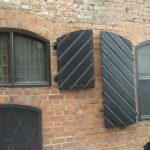
End of Stiklų St. on the intersection with Dominikonų St. and Šv. Ignoto St. in the Old Town in VilniusIn Stiklų St. No. 4 stands a typical building with a so-called Courtyard of the Printing House. Its history goes back to the 15th century. In the 16th century it held the Mamonichi printing house. A Gothic building in the courtyard with the exterior and fragments of the interior was reconstructed in 1974. In front of it a sculpture of "The Chronicler" is erected in 1973Wall (right) of the former Russian Orthodox church in Stiklų St. No. 17All photos are copyrighted by Vladislav B. Sotirovic© Vladislav B. Sotirovic 2020
Continue Reading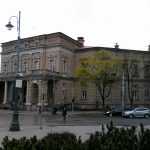
The Library of the Lithuanian Academy of Sciences was established in 1941 together with the Academy of Sciences, in the building of the former State Wróblewski LibraryBetween two world wars, State Wróblewski Library was one of the largest libraries in Vilnius. It was founded by lower Tadeusz Wróblewski. In 1941, the new Library inherited from it some 163.000 volumes, more than 35.000 manuscripts, large collections of numismatics, cartography, and artworksAfter WWII, the Library was supplemented by extensive collections from other libraries. Today, its stocks count more than 3.77 mln itemsAll photos are copyrighted by Vladislav B. Sotirovic© Vladislav B. Sotirovic 2020
Continue Reading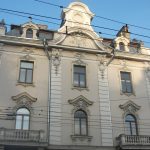
Beside the main house (close to the Antakalnio St.) stands a residential house, in which the first exhibition of Lithuanian art took place in 1907A monument to the brothers Vileišis in Vilnius near the River NerisThe main Vileišis building was one of the first in Vilnius, for whose construction a rare material in Lithuania - concrete - was used. The main house was built in 1904-1906 by the Lithuanian businessman and public figure Petras Vileišis according to a design by engineer August Klein All photos are copyrighted by Vladislav B. Sotirovic© Vladislav B. Sotirovic 2018
Continue Reading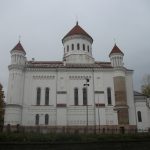
The church is endowed by Juliana, the wife of Lithuania's Grand Duke Algirdas (1345-1377) and mother of Lithuania's and Poland's ruler Jogaila. Grand Duke of Lithuania Jogaila baptized Lithuania in 1387. She was buried in the churchFragments of Gothic masonry have survived in the bottom part and in some segments up to the top. The present façades and the cupola imitate Georgian medieval architectureIn 1415 the church was transformed into a cathedral. In 1511-1522 it was reconstructed by Prince Constantine Ostrogsky. In 1516 Helen (a Russian Orthodox), wife of Alexander Jagiellon (Polish King and Lithuanian Grand Duke) was buried there. In 1609 the cathedral was given to the Uniates (Greek Catholics). In 1865-1868 it rendered its present appearance, and it began to function as a church again All photos are copyrighted by Vladislav B. Sotirovic© Vladislav B. Sotirovic 2018
Continue Reading
One of the focal touristic attractions in the Žvėrynas district of Vilnius is the traditional type of the wooden houses coloured in different coloursŽvėrynas means "menagerie" or "beastland". In the 19th century a forest grew in this areaSince 1893, the process of urbanization of the district of Žvėrynas started with the building of wooden and brick villas and summerhouses. Today, this district of Vilnius is a prestigiuos residential part of the capitalAll photos are copyrighted by Vladislav B. Sotirovic© Vladislav B. Sotirovic 2020
Continue Reading
The Augustines established themselves on this site in Vilnius Old Town after 1661. The monastery date from the late 18th centuryIn 1833-1842 the monastery housed the Vilnius Spiritual Academy. In 1859 it was converted into a Russian Orthodox Church of St. AndrewIn 1918 the church was returned to the Roman Catholics and renovated. After WWII the interior was destroyed during the installation of a ferroconcrete ceiling; the church was used as a warehouse in the Soviet timeAll photos are copyrighted by Vladislav B. Sotirovic© Vladislav B. Sotirovic 2019
Continue Reading
Trakų St. finishes where it meets Pylimo St, which runs along the course of the old city wall. There used to be a gate here, which was pulled down together with the wall at the very beginning of the 19th century. In the niche of the Umiastowski estate (Trakų St. 2) there is a Statue of "The City Guard" (1973) In Trakų Street, there is the Church of Our Lady of the Assumption that was founded here by the noble Goštautas family in 1387, the same year as Lithuania became converted to Christianity. However, it is believed that the church with the monastery existed even earlierOne of courtyards of the buildings in Trakų StreetAll photos are copyrighted by Vladislav B. Sotirovic© Vladislav B. Sotirovic 2020
Continue ReadingA Dominican Monastery at the Church of the Holy Spirit
Monument to Lithuanian Grand Duke Gediminas
Vilnius – Guided Sightseeing Tours
Astronomic Instruments at the White Hall at Vilnius University
Chapel of St. Casimir (exterior)
St. John Steet in Vilnius
Church of St. Michael the Archangel
The White Hall of the Old Campus of Vilnius University
Chapel of St. Casimir (interior)
The Old Arsenal in Vilnius
The Pac Mansion
Lithuania – Geographical Center of Europe
The Church of St. Parasceve
Stiklų St. in the Old Town in Vilnius
The Wroblewski Library of the Lithuanian Academy of Sciences
Vileišis Estate
Russian Orthodox Church of the Blessed Mother of God
Traditional Wooden Houses in Žvėrynas
Church of Blessed Mary the Comforter and the Augustine Monastery
Trakų Street in Vilnius


